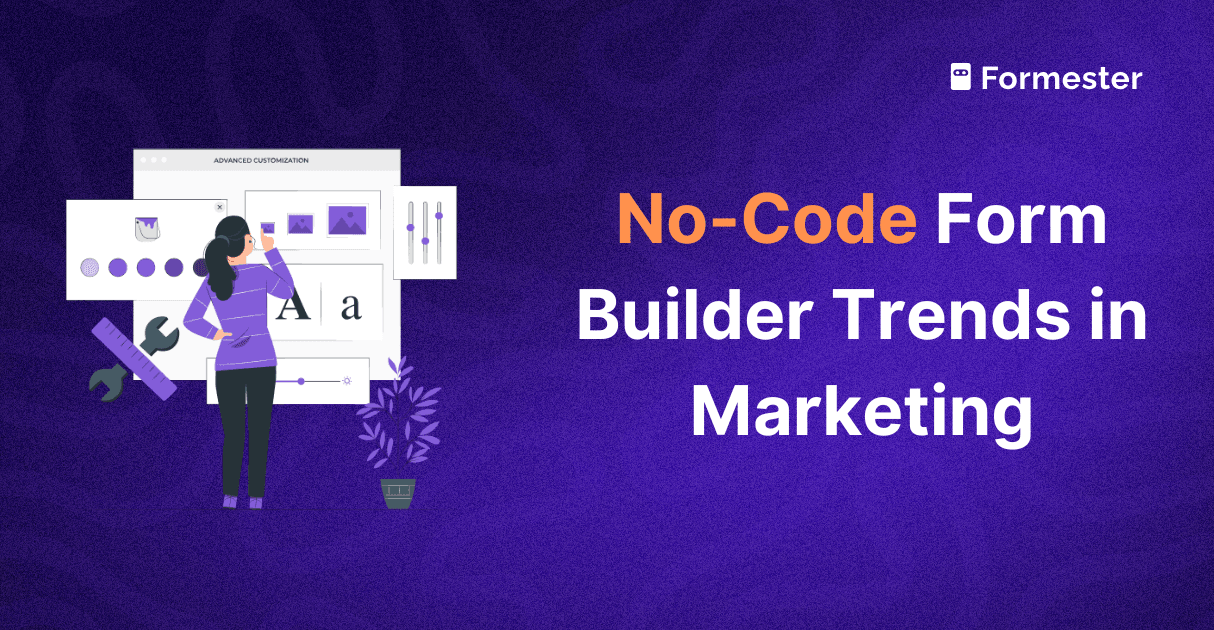How Low Code and No Code Form Builders Are Transforming Marketing

In the context of the current era of quick market change and intense competition, the speed of adoption of new marketing technologies becomes a success criterion. Low-code technologies make effective solutions available for implementation without employing an entire army of coders.
It effectively makes it easy to launch marketing campaigns and increases their effectiveness. Utilization of such platforms not only becomes cost-effective but also provides flexibility and mobility when engaging with the audience.
Marketing trends
Low-code in 2025 won't be a trend anymore but a standard for creating digital products, especially data collection forms. According to recent research, by 2026, low-code platforms will power 75% of all new applications, driven by the growing demand for automation and the global shortage of skilled developers. This shift reflects how businesses are rethinking software creation, empowering non-technical teams to launch and iterate faster than ever.
You can create complex sales funnels, integrate them with CRM software, and react to customers' requirements in real time without a single line of code. Visual editors enable marketers to have tools to make changes and conduct hypothesis testing in real time quickly. These types of solutions reduce the time from idea to launch by half.
Efficiency and speed
Platform-based visual form builders allow you to avoid errors and improve UX quality without technical skills, reducing the delay in the traditional development process. Marketing teams can easily transform depending on user response, thus improving conversion and reducing customer acquisition costs. Integrating your favorite services simplifies the processing of applications and reduces response time.
The most popular tools, such as Typeform, Jotform, and Google Forms, combine simplicity of creation with great functionality. They simplify information gathering, mailing automation, and contact database updating, which is convenient for users and has a positive effect on their activity.
Analytics and adaptability
Integrated analytics modules allow you to see at a glance which form fields work well and which need optimization. You can therefore identify bottlenecks and make structural or content changes in a timely manner without taking up unnecessary time. Low-code allows for flexible management of logic, from simple conditions to complex situations. Marketers have the ability to tailor user interaction in terms of their responses.
Automation allows you to perform complex sequences of actions — reminders, audience segmentation, and message tailoring. The entire system runs without other interference from technical specialists, making it faster to carry out test and scaling cycles. All these features boost the general productivity of marketing processes.
UX — the basis of conversion
Contemporary users like simplicity and convenience. Forms with excessive fields or nonadaptive ones quickly lose the audience. Good UX is compelling and nudges users towards completing the form, positively affecting performance indicators. Reduced complexity and visual clarity of the process presentation make it comfortable and convenient.
Minimalism and logic
Only those fields are necessary to meet the business goal. For example, name, contact information, or questions that will further narrow down the customer's needs. Dissecting the form into logical steps and entering information stepwise reduces psychological resistance. Users are less fatigued, and this ensures they are more likely to complete the application.
It is important to be well-optimized for all devices. Mobile optimization is no longer a luxury but a necessity. Low-code solutions allow you to create a form adaptable enough for any screen without additional effort. This provides convenience to users and increases reach.
Visual cues and social proof
The rest of the interface elements, such as pop-up hints, data entered validity checking, and progress indicators, reduce the number of errors and improve the experience. The availability of reviews, the logos of good customers, or certificates establishes confidence. Visual security guarantees dispel fears of transferring personal information.
The psychological effect of 'social proof' greatly increases the likelihood of conversion. If users on a site see that someone or a group of people is using a product or service effectively, the users themselves are likely to make a leap of faith. This becomes especially important in competitive markets.
Automation of processes and scaling
Low-code solutions are optimal for campaign scaling. They allow you to deploy new versions of forms without involving technical teams and with minimal time spent. It is especially crucial for companies that frequently test hypotheses or try out different audience segments.
Integration with CRM and ad channels
Automated lead transfer to the CRM system saves manual labor and minimizes errors. It also accelerates response times for managers and enhances the quality of lead processing. Integrated advertising personalisation functions allow more direct targeting and retargeting, enhancing return on investment.
Real-time analytics infrastructure allows for monitoring performance and responding rapidly to variations in user behavior, allowing for continuous marketing activity improvement.
Flexibility and scalability
Because of the low-code trends, it is easy to launch new campaigns and adapt current templates for different audiences. This guarantees effectiveness and reduces the risk of losing clients. Through A/B testing, optimal solutions can be identified, and the quality of interaction can be constantly enhanced.
The platforms facilitate multi-channel marketing, i.e., connecting multiple platforms and audiences simultaneously. The approach maximizes reach and stability in revenue.
Conclusion
Low-code technology presents new possibilities for marketers through fast launch, ease in management, and decent conversion rates. Employing such platforms allows you to immediately respond to market demand, adapt to changes in the behavior of your target audience, and save resources. That is no longer the future but the present business in 2025.
Low-code deployment allows organizations to deliver forms and create strong instruments that work towards results and improvement. Due to its high level of flexibility and automation, low-code can facilitate long-lasting customer development and reduce costs, so it is a significant piece of current strategies.

